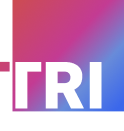What does MDF Stand for in Business?
- TRIdigital

- Apr 14, 2024
- 7 min read
Updated: Jun 16

Market Development Funds (MDF) are financial or knowledge-based resources that vendors provide to their sales partners. These funds help businesses run marketing campaigns, boost sales, and grow their brand. MDF supports activities like advertising, events, and digital marketing to increase revenue.
Businesses spend billions each year on marketing, but many don’t know they can get extra funds through MDF programs. About 50% of companies don’t fully use these funds, missing out on growth opportunities and higher sales.
TRIdigital Marketing helps businesses maximize their MDF to create powerful marketing campaigns. With expert guidance, companies can use these funds effectively to grow their brand.
Understanding MDF in Business
Many companies struggle with marketing costs, but marketing development funds (MDF) help reduce these expenses. Vendors give these funds to partners to promote their products. MSP Content Marketing helps businesses use MDF effectively. What does MDF stand for in business? It means extra money or resources to support marketing efforts. These funds help with ads, content, and lead generation.
In other words, MDF helps businesses grow without using their own money. For instance, a company can run online ads or host events using MDF instead of their budget. After that, they can track results and see how MDF increases sales. Above all, it’s a smart way to expand.
How Marketing Development Funds Work

Many businesses struggle with marketing costs. What does MDF stand for in business? It means Marketing Development Funds, which help companies promote products without using their own budget. Vendors offer these funds to trusted partners to support marketing efforts, drive sales, and grow brand awareness.
MDF comes in two forms: financial support and knowledge-based resources. Financial MDF provides money for ads, events, and promotions. In other words, businesses get funds to run campaigns that attract customers. Knowledge-based MDF includes MSP marketing tools like email lists, pre-designed templates, and marketing guides to help businesses reach more people.
Steps to MDF (Marketing Development Funds)
1. Maintain
A business must have a strong sales team to manage leads and stay competitive. Vendors look for companies that actively sell their products.
2. Evaluate
Companies should choose the right vendors. So, they must focus on partners who provide the best marketing support and offer MDF opportunities.
3. Work
After that, businesses must work closely with vendors to understand how the MDF process works. In other words, they need to learn the rules and guidelines.
4. Apply
Once a business understands the process, it can apply for MDF. The application should explain how the funds will be used to boost inbound marketing MSP efforts.
5. Execute
After receiving approval, the business can now launch its marketing campaign with the help of an expert MSP Marketing company to ensure the campaign aligns with goals and delivers optimal results. For instance, they can create ads, run events, or invest in social media promotions.
6. Document
It is important to track how the MDF is used. Businesses should keep records, measure results, and share reports with vendors. This builds trust and helps with future applications.
7. Use
After proving success, a business can apply for more MDF. Above all, vendors want to see that the funds are used effectively before providing more support.
Market Development Funds: Examples of Use

Businesses use Marketing Development Funds (MDF) to grow their brand and increase sales. What does MDF stand for in business? It means extra money from vendors that helps companies run marketing campaigns. These funds support different activities that boost customer awareness and drive revenue.
Ways to Use MDF
Advertising and Promotions
Businesses can use MDF to pay for ads on radio, TV, or social media. For instance, a company may buy a radio spot to promote a new product. In addition, they can invest in online ads to reach more people.
Events and Trade Shows
MDF helps businesses attend trade shows, rent booth space, and launch marketing events. For example, they can use funds to host a lunch-and-learn event to educate customers about their products. After that, they can collect leads and follow up with potential buyers.
Webinars and Online Marketing
Companies often use MDF to fund webinars and digital campaigns. In other words, they can create educational sessions to engage customers. So, they can attract more buyers and increase sales.
Sales Lead Generation
MDF can also help businesses get sales leads. For instance, they can use funds to rent lead lists or run telemarketing campaigns. Above all, these activities bring in potential customers and help close more deals.
Best Practices for Using MDF
Focus on the Right Vendors
Not all vendors offer MDF. So, businesses should work with those that provide real value. In addition, they should learn the vendor’s MDF process to avoid mistakes.
Plan Before Applying
Businesses need a clear plan before requesting MDF. For example, when planning an event, they should explain how the funds will be used. MSP SEO can help optimize marketing strategies for better results. In other words, they should present their request with details like budget, expected results, and marketing strategy.
Track and Report Results
After using MDF, businesses must track their results. For instance, if MDF is used for a webinar, they should count attendees and follow up on leads. After that, they need to report the outcomes to the vendor. This builds trust and helps secure future funds.
Show Commitment to the Vendor
Vendors prefer to invest in businesses that promote their products. Therefore, companies should show their dedication by getting vendor certifications or sharing their sales pipeline. In other words, proving loyalty increases the chances of getting MDF.
MDF vs. Co-Op Marketing Funds
Many confuse MDF with co-op marketing funds, but they are different.
MDF: Given for short-term marketing efforts like webinars, ads, and trade shows. Vendors provide MDF based on need, not sales volume.
Co-Op Funds: Given to high-volume sellers, such as distributors. These funds are for long-term marketing, like annual campaigns.
Both funds are valuable, but many businesses do not fully use them because they don’t understand the process. So, learning how to apply for MDF can help companies get more support and grow faster.
Above all, Marketing Development Funds provide businesses with free resources to increase brand awareness, gain new customers, and boost sales. In addition, investing in SEO services in Dallas, TX helps businesses improve online visibility and attract more potential clients.
Benefits of Using MDF in Business

Many businesses struggle with marketing costs. What does MDF stand for in business? It means Marketing Development Funds, which help companies promote their brand, attract customers, and grow sales without spending their own money. Vendors provide these funds to trusted partners to support marketing campaigns.
1. Increases Brand Awareness
MDF helps businesses reach more people. For instance, companies can use it for online ads, trade shows, and social media campaigns. In other words, more people see the brand, which builds trust and recognition. After that, businesses can turn these potential customers into buyers.
2. Generates More Sales Leads
Getting new customers is not easy, but MDF makes it simpler. So, businesses can use it to pay for lead lists, email marketing, or webinars. For example, a business can host a free online event and collect contact details from attendees. After that, they can follow up and turn those leads into customers.
3. Lowers Marketing Costs
Marketing is expensive, especially for small businesses. MSP Networks can help companies access Marketing Development Funds to promote products without using their own budget. Therefore, businesses can invest in quality marketing without financial stress. Above all, this allows them to grow faster.
4. Improves Return on Investment (ROI)
MDF ensures that businesses spend wisely. In other words, they get funds to test new marketing strategies without financial risk. For example, a company can use MDF to run social media ads. If the ads bring in more customers, they know where to invest in the future. Therefore, MDF helps businesses make smarter decisions.
Common MDF Challenges and How to Overcome Them
Many businesses struggle to use Marketing Development Funds (MDF) effectively. What does MDF stand for in business? It means extra money from vendors to help companies market their products. However, getting and using these funds comes with challenges. Below are common problems and solutions.
Difficulty Getting MDF from Vendors
Some businesses find it hard to secure MDF. Vendors may have strict rules or give funds only to certain partners. In other words, not everyone qualifies.
How to fix it:
Build a strong relationship with vendors.
Show commitment by promoting their products.
Understand the vendor’s MDF rules before applying.
Present a clear marketing plan to increase approval chances.
Problems Tracking MDF Spending
After receiving MDF, businesses must track how they use it. So, if spending is unclear, vendors may not approve future funds.
How to fix it:
Keep detailed records of where the money goes.
Use software or spreadsheets to track expenses.
Report results to vendors to show how MDF helped sales.
Proving Return on Investment (ROI)
Vendors want to see that MDF is making a difference. In other words, they need proof that the money helped increase sales.
How to fix it:
Track customer engagement, leads, and conversions.
Compare sales before and after using MDF.
Share success stories with vendors to secure future funding.
Avoiding Mismanagement of MDF
Some businesses misuse MDF or fail to follow vendor guidelines. After that, vendors may stop giving funds.
How to fix it:
Follow the vendor’s rules carefully.
Use MDF only for approved marketing activities.
Communicate with vendors to avoid mistakes.
Key Takeaway
What does MDF stand for in business? It means Marketing Development Funds, which help companies promote products without spending their own money. So, businesses can use MDF for ads, events, and lead generation to grow sales. In other words, it is free money for marketing, but businesses must follow vendor rules to get and use it properly. Also, tracking results and proving success will help secure more funding in the future.
Many companies struggle with MDF because they do not understand the process. Therefore, working with an MSP marketing agency can help. A marketing expert can guide businesses through the MDF process, increase approval chances, and create high-performing campaigns. Above all, using MDF wisely leads to better growth and higher sales. Get a proposal today and start making the most of MDF!
FAQs
What does MDF stand for in business?
MDF stands for Marketing Development Funds, which vendors provide to help partners promote their products. These funds support marketing efforts like advertising, events, and lead generation.
How can businesses use MDF effectively?
Businesses can use MDF for digital ads, trade shows, webinars, and other marketing activities. Tracking results and following vendor guidelines help maximize future funding.
What are the benefits of using MDF?
MDF lowers marketing costs, increases brand awareness, and generates more sales leads. It allows businesses to expand their reach without spending their own money.
How can a company qualify for MDF?
Vendors usually provide MDF to partners who actively promote their products and show strong sales potential. A clear marketing plan and a good vendor relationship improve approval chances.
What challenges do businesses face with MDF?
Some common challenges include strict vendor requirements, difficulty tracking spending, and proving ROI. Businesses can overcome these by keeping records, reporting results, and aligning with vendor goals.



